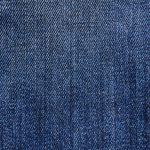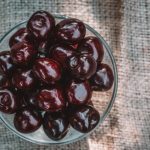Are you struggling to identify different types of cotton fabric? Look no further! This article will guide you through the 8 best methods to determine the fabric type.
By using visual inspection, conducting burn tests, and examining water absorption and density, you’ll become a pro at identifying cotton fabrics.
Thread count examination, chemical tests, microscopic analysis, and consultations with experts will further enhance your knowledge.
Get ready to master the art of fabric identification!
Table of Contents
Visual Inspection
To identify cotton fabric types, you can start by visually inspecting them using a magnifying glass. This method allows you to examine important aspects such as thread count and fabric texture.
When it comes to cotton fabrics, thread count is of utmost importance. Thread count refers to the number of threads per square inch of fabric. The higher the thread count, the more durable and luxurious the fabric tends to be. By inspecting the fabric closely with a magnifying glass, you can count the number of threads and determine the thread count accurately.
Additionally, fabric texture examination is another crucial step in identifying cotton fabric types. Cotton fabrics have a characteristic soft and breathable texture. By visually inspecting the fabric, you can assess its texture and determine whether it matches the typical properties of cotton. Look for a smooth and slightly textured surface that’s comfortable to touch.
Burn Test
Now let’s talk about the burn test.
This method involves observing the flame color and analyzing the resulting ash residue. By noting the color of the flame, you can determine the type of fabric.
Additionally, examining the ash residue can provide further clues about the fabric composition.
Flame Color Identification
You can identify different cotton fabric types by observing the flame color during a burn test. The flame color can give you important information about the fabric’s fiber content and flame retardancy assessment. Here are some key points to keep in mind when conducting a burn test:
-
Yellow flame with a blue base: This indicates that the fabric is made of pure cotton. It burns steadily and leaves behind a soft, gray ash.
-
Black smoke and a sizzling sound: This suggests that the fabric contains synthetic fibers like polyester or nylon. These fabrics tend to melt and form hard beads when burned.
-
Flickering orange flame: This can indicate the presence of natural fibers like silk or wool. They usually burn slowly and leave behind a powdery ash.
-
No flame or a glowing ember: This may suggest that the fabric is flame-resistant or treated with flame retardant chemicals.
Ash Residue Analysis
Conducting an ash residue analysis can provide valuable insights into the composition of cotton fabric types. By examining the ash residue left behind after burning a fabric sample, you can determine whether it’s made of pure cotton or contains synthetic fibers.
This analysis involves carefully burning a small piece of the fabric and observing the resulting ash. Pure cotton fabric will leave behind a fine, soft ash that’s light gray or white in color. On the other hand, fabric blends or synthetic fibers will produce a darker, coarser ash with a different texture.
To confirm your findings, you can also use a microscope to examine the ash residue for any remaining fibers or other particles. This microscopic analysis can further assist in identifying the specific fabric composition.
Water Absorption Test
To identify cotton fabric types, you can start with the water absorption test. This test involves observing how quickly the fabric absorbs water, which can indicate whether it’s made of cotton or another material.
The absorption rate is a reliable indicator that differentiates cotton from other fabrics.
Absorption Rate Indicates
By observing the absorption rate, which indicates the water absorption test, you can accurately identify different types of cotton fabric. The absorption rate refers to how quickly the fabric absorbs water and can provide valuable insights into its composition and quality.
Here are some benefits and limitations of using absorption rate to identify cotton fabric types:
-
Absorption Rate Benefits:
-
Helps distinguish between different cotton fabric blends.
-
Allows for the identification of lower quality cotton fabric with high absorption rates.
-
Provides a quick and easy method to differentiate between cotton and synthetic fabrics.
-
Can indicate the fabric’s ability to retain moisture, making it suitable for specific applications like towels or athletic wear.
-
Absorption Rate Limitations:
-
May not be the sole determining factor in identifying fabric types.
-
Other factors like weight, texture, and appearance should also be considered.
-
Absorption rate can vary depending on fabric finishes or treatments.
-
Testing accuracy can be affected by external factors like temperature and humidity.
Differentiates Cotton From Others
One way to differentiate cotton fabric from other types is through its water absorption test. This test is a common method used in cotton identification techniques and fabric composition analysis.
To perform the water absorption test, simply take a small piece of the fabric and place it in a bowl of water. Observe how the fabric reacts to the water. Cotton fabric has excellent water absorption properties, meaning it will quickly absorb water and become fully saturated.
Other types of fabric, such as polyester or nylon, may take longer to absorb water or may not absorb it as efficiently. By conducting the water absorption test, you can easily determine if the fabric in question is indeed cotton or another type of material.
Reliable Indicator of Cotton
You can continue the discussion from the previous subtopic by conducting a water absorption test, which is a reliable indicator of cotton fabric.
To identify cotton fabric accurately, consider the following:
-
Water Absorption Test: Dip a small portion of the fabric in water. If it quickly absorbs the water, it’s likely to be cotton.
-
Quick Drying: Cotton fabric has excellent moisture-wicking properties. After conducting the water absorption test, observe how quickly the fabric dries. If it dries relatively fast, it’s another indication of cotton.
-
Softness: Cotton fabric is known for its soft and comfortable feel. Touch the fabric and evaluate its texture. If it feels soft, chances are it’s made of cotton.
-
Breathability: Cotton allows air to circulate, making it breathable and ideal for hot weather. Consider the fabric’s breathability when determining if it’s cotton.
Density Test
To accurately determine the type of cotton fabric, you can regularly perform a density test. This test involves measuring the moisture content and analyzing the fabric structure to identify the density of the fabric. By understanding the density, you can gain insights into the quality and characteristics of the cotton fabric.
The moisture content measurement is an essential part of the density test. It helps determine the amount of water present in the fabric, which can affect its physical properties. Moisture content is typically measured using a moisture meter, which provides accurate readings and ensures reliable results.
Fabric structure analysis is another crucial aspect of the density test. By examining the fabric’s structure, including the weave pattern, thread count, and yarn thickness, you can determine its density. Fabrics with a higher density tend to be more durable and resistant to wear and tear.
Regularly performing the density test can help you identify different types of cotton fabric, such as plain weave, twill weave, or satin weave. By understanding the density of the fabric, you can make informed decisions about its usage and care.
Thread Count Examination
To continue the discussion from the previous subtopic on density test, examine the thread count to further identify the type of cotton fabric. Thread count refers to the number of threads woven together in one square inch of fabric. This measurement can provide valuable insights into the fabric’s quality and characteristics. Here are some key points to consider when examining the thread count:
-
Fiber content analysis: Before delving into the thread count examination, it’s important to determine the fiber content of the fabric. Cotton fabrics can be pure cotton or blends with other fibers such as polyester or spandex. Knowing the fiber composition will help in understanding the expected thread count range.
-
Fabric texture examination: Along with the thread count, analyzing the fabric’s texture can give clues about its type. Different cotton fabrics have distinct textures, ranging from smooth and crisp to soft and fluffy. Observing the texture can help confirm the thread count and narrow down the fabric type.
-
Higher thread count indicates finer fabric: Generally, fabrics with a higher thread count are considered to be of higher quality. A higher thread count means more threads per inch, resulting in a denser and smoother fabric surface.
-
Consider the fabric’s purpose: Keep in mind that different types of cotton fabrics have varying thread count ranges depending on their intended use. For example, bed sheets typically have a higher thread count compared to t-shirts or towels.
Chemical Tests
Examine the fabric’s reaction to chemical tests to further identify the type of cotton fabric. Chemical tests are an effective method for fiber identification and can help determine the fabric composition accurately. By subjecting the fabric to various chemical reagents, you can observe its reaction and make informed conclusions about its composition.
One common chemical test is the burn test. It involves burning a small piece of fabric and observing the flame, smoke, and residue. For cotton fabrics, a clean flame, little smoke, and a fine gray ash indicate the presence of cotton fibers. Another test involves using a solution of sulfuric acid and potassium dichromate. When applied to cotton, the fabric turns yellow due to the presence of cellulose, a characteristic feature of cotton fibers.
To help you understand the different chemical tests and their results, refer to the table below:
| Chemical Test | Reaction on Cotton Fabric |
|---|---|
| Burn Test | Clean flame, little smoke, fine gray ash |
| Sulfuric Acid Test | Fabric turns yellow |
Chemical tests are valuable tools for identifying cotton fabric types accurately. By carefully examining the fabric’s reaction to these tests, you can confidently determine its fiber content and composition.
Microscopic Analysis
Use a microscope to closely examine the cotton fabric for accurate identification of its type. When conducting a microscopic analysis, there are several key factors to consider in order to determine the fabric’s composition and fiber structure:
-
Fiber Morphology: Look closely at the fibers under the microscope to identify their shape, length, and diameter. Cotton fibers are typically long, cylindrical, and have a twisted ribbon-like appearance.
-
Cell Structure: Examine the cells within the cotton fibers. Cotton fibers are composed of cellulose, which forms a unique cell structure known as a lumen. This distinct feature helps differentiate cotton from other fabric types.
-
Surface Characteristics: Pay attention to the surface of the cotton fabric. Cotton fibers have a scaly surface texture, which can be observed under the microscope. This texture is a result of the overlapping scales on the fiber’s surface.
-
Fabric Weave: Analyze the fabric’s weave pattern. Different types of cotton fabrics have distinct weave patterns, such as plain weave, twill weave, or satin weave. Identifying the specific weave pattern can provide additional information about the fabric’s type.
Consultation With Experts
For the most accurate identification of cotton fabric types, consult with experts who specialize in textiles. Expert opinions and professional advice can provide invaluable insights into the specific characteristics and properties of different cotton fabrics.
Textile experts have extensive knowledge and experience in identifying and analyzing various types of fabrics, including cotton. They can examine the fabric’s texture, thread count, weave pattern, and other distinguishing features to determine its type accurately. These experts have access to advanced equipment and techniques that can aid in the identification process.
When consulting with textile experts, it’s essential to provide them with all available information about the fabric in question. This may include details such as the fabric’s origin, manufacturing process, and any specific markings or labels. The more information provided, the more accurate the expert’s analysis will be.
Expert opinions and professional advice can also help in identifying cotton blends, where cotton is mixed with other fibers. These blends can significantly affect the fabric’s characteristics, making it crucial to consult with experts who can accurately identify the different fibers present.
Frequently Asked Questions
Can I Use the Burn Test Method to Identify Cotton Blends or Only 100% Cotton Fabrics?
Yes, you can use the burn test method to identify cotton blends and 100% cotton fabrics. However, it has limitations for cotton blends as the results may be less accurate due to the presence of other fibers.
How Can I Differentiate Between Different Types of Cotton Fabric, Such as Combed Cotton, Organic Cotton, or Pima Cotton?
To differentiate between different types of cotton fabric, visually inspect the fabric for specific characteristics like weave pattern or color. Also, touch and feel the fabric to gauge its softness or thickness. Understanding the manufacturing process can further assist in identification.
Are There Any Specific Chemical Tests or Reagents That Can Be Used to Identify Cotton Fabric Types?
Chemical reactions and spectroscopic analysis can be used to identify cotton fabric types. Different chemical tests and reagents can be applied to determine the specific type of cotton fabric you are dealing with.
Can the Water Absorption Test Be Used to Identify the Quality or Grade of the Cotton Fabric?
The water absorption test can provide some insight into the quality of cotton fabric, but it has limitations. Consider alternative methods, such as examining the fabric’s weave, texture, and certifications, to accurately identify cotton fabric quality.
How Accurate Is the Thread Count Examination in Determining the Authenticity or Quality of Cotton Fabric?
The thread count examination is not always accurate in determining cotton fabric authenticity or quality. There are alternative methods that can be used to identify cotton fabric types with more precision.
- Choosing the Right Fabrics for Babies - July 20, 2024
- Impact of Fabrics on Skin Health - July 20, 2024
- Benefits of Antimicrobial Fabrics - July 20, 2024







